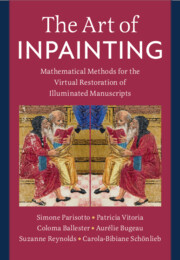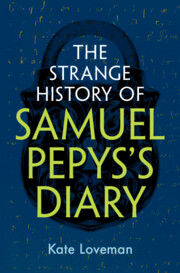Refine search
Actions for selected content:
195 results
2 - What Is a Counterrevolution?
-
- Book:
- Return of Tyranny
- Published online:
- 17 September 2025
- Print publication:
- 23 October 2025, pp 18-43
-
- Chapter
- Export citation
Reforesting Upper Mississippi River floodplain openings colonized by invasive species
-
- Journal:
- Invasive Plant Science and Management / Accepted manuscript
- Published online by Cambridge University Press:
- 05 September 2025, pp. 1-36
-
- Article
-
- You have access
- Open access
- Export citation
Coastal roots: the history of seagrass in Northern Ireland
-
- Journal:
- Journal of the Marine Biological Association of the United Kingdom / Volume 105 / 2025
- Published online by Cambridge University Press:
- 23 June 2025, e63
-
- Article
-
- You have access
- Open access
- HTML
- Export citation

The Art of Inpainting
- Mathematical Methods for the Virtual Restoration of Illuminated Manuscripts
-
- Published online:
- 22 May 2025
- Print publication:
- 22 May 2025
2 - Local Inpainting Methods
-
- Book:
- The Art of Inpainting
- Published online:
- 22 May 2025
- Print publication:
- 22 May 2025, pp 13-51
-
- Chapter
- Export citation
4 - Deep Learning Inpainting Methods
-
- Book:
- The Art of Inpainting
- Published online:
- 22 May 2025
- Print publication:
- 22 May 2025, pp 115-161
-
- Chapter
- Export citation
3 - Non-Local Inpainting Methods
-
- Book:
- The Art of Inpainting
- Published online:
- 22 May 2025
- Print publication:
- 22 May 2025, pp 52-114
-
- Chapter
- Export citation
5 - Methods Inspired from Cultural Heritage
-
- Book:
- The Art of Inpainting
- Published online:
- 22 May 2025
- Print publication:
- 22 May 2025, pp 162-174
-
- Chapter
- Export citation
1 - Introduction
-
- Book:
- The Art of Inpainting
- Published online:
- 22 May 2025
- Print publication:
- 22 May 2025, pp 1-12
-
- Chapter
- Export citation

The Strange History of Samuel Pepys's Diary
-
- Published online:
- 24 April 2025
- Print publication:
- 24 April 2025
Introduction
-
- Book:
- The Strange History of Samuel Pepys's Diary
- Published online:
- 24 April 2025
- Print publication:
- 24 April 2025, pp 1-14
-
- Chapter
- Export citation
Chapter 8 - Reading against the Grain
-
- Book:
- The Strange History of Samuel Pepys's Diary
- Published online:
- 24 April 2025
- Print publication:
- 24 April 2025, pp 151-176
-
- Chapter
- Export citation
Chapter 1 - Writing the Diary
-
- Book:
- The Strange History of Samuel Pepys's Diary
- Published online:
- 24 April 2025
- Print publication:
- 24 April 2025, pp 15-31
-
- Chapter
- Export citation
Chapter 4 - First Publication
-
- Book:
- The Strange History of Samuel Pepys's Diary
- Published online:
- 24 April 2025
- Print publication:
- 24 April 2025, pp 64-83
-
- Chapter
- Export citation
Afterword
-
- Book:
- The Strange History of Samuel Pepys's Diary
- Published online:
- 24 April 2025
- Print publication:
- 24 April 2025, pp 177-183
-
- Chapter
- Export citation
Biocrust research in North America with a focus on drylands: history, insights and opportunities
-
- Journal:
- Cambridge Prisms: Drylands / Volume 2 / 2025
- Published online by Cambridge University Press:
- 24 March 2025, e6
-
- Article
-
- You have access
- Open access
- HTML
- Export citation
11 - Conservation, Restoration and Presentation of Ruins
-
- Book:
- The Ruins of Rome
- Published online:
- 02 January 2025
- Print publication:
- 06 February 2025, pp 241-276
-
- Chapter
- Export citation
8 - ‘Virtual’ Rome
-
- Book:
- The Ruins of Rome
- Published online:
- 02 January 2025
- Print publication:
- 06 February 2025, pp 158-178
-
- Chapter
- Export citation
Chapter 1 - Moving Together
-
- Book:
- Embodied Experience in British and French Literature, 1778–1814
- Published online:
- 19 December 2024
- Print publication:
- 02 January 2025, pp 35-81
-
- Chapter
-
- You have access
- Open access
- HTML
- Export citation
Prologue
-
- Book:
- The German Empire, 1871–1918
- Published online:
- 06 December 2024
- Print publication:
- 02 January 2025, pp 1-45
-
- Chapter
- Export citation
